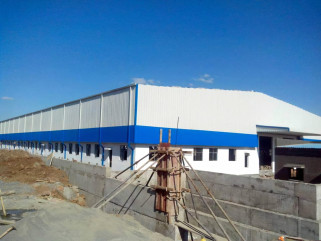Top 5 Sustainability Practices in Steel Building Manufacturing
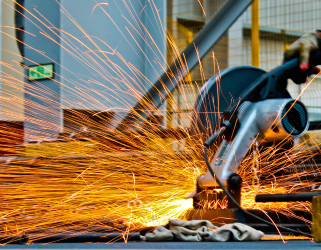
A century ago, steel buildings were symbols of strength, progress, and modernity. Today, steel architecture is all that and more. It’s becoming the backbone of environmental consciousness too. The construction industry, known for its resource-intensive processes, is witnessing a pivotal shift. Now, green steel construction isn't just a trend but a necessity for a sustainable future. What’s causing this evolution? A focus on thoughtful innovation, smarter practices, and a commitment to eco-friendly solutions.
Here, we explore the top 5 sustainability practices shaping the steel building industry:
1. Using Recycled Steel for Eco-Friendly Steel Buildings
Imagine tearing down an old bridge and using that steel to construct a modern warehouse. Hard to believe, right? But that's the beauty of steel. It can be recycled infinitely without losing its structural integrity.
The construction industry has leaned into this advantage through practices like steel reclamation. Recycled steel is used to replace virgin materials in constructing eco-friendly steel buildings. Not only does this reduce the demand for mining, but it also minimizes waste that ends up in landfills.
Take pre-engineered steel buildings (like those by Metrosh) as a prime example. These structures often feature components made from recycled steel, making them lightweight on the planet but heavy on performance.
Why it Matters: Recycling steel reduces carbon emissions by up to 58% compared to producing new steel. Each ton of recycled steel saves about 1,100 kg of iron ore, 630 kg of coal, and 55 kg of limestone. Imagine the impact if every building adopted this practice!
2. Energy-Efficient Manufacturing Processes
One of the most significant contributors to the carbon footprint in steel building manufacturing is the energy used during production. Sustainable steel manufacturing now focuses on adopting renewables and reducing energy waste.
Companies increasingly implement advanced technologies like electric arc furnaces (EAFs), which consume far less energy than traditional blast furnaces. Additionally, eco-friendly innovations such as heat recovery systems ensure that no energy goes unused in the production cycle.
Consider this example from Metrosh’s operations: By integrating efficient design in their steel girder and pre-engineered building structures, they not only save energy during production but also reduce energy consumption in the buildings’ eventual usage phase, promoting holistic sustainability.
Why it Matters: By using energy-efficient methods, manufacturers support steel building sustainability while lowering production costs, passing the benefits down the supply chain.
3. Modular Construction for Sustainable Steel Buildings
Have you heard of legos? Modular construction practices are the grown-up, life-sized version of this idea. Here’s how it works. Instead of building entire structures on-site, components are pre-manufactured in factories. These pieces are then transported and assembled at construction sites like a giant puzzle.
This process eliminates excess material waste, reduces construction time, and minimizes on-site environmental disruption. It’s no wonder modular steel buildings are considered some of the most efficient options available in green steel construction today.
Metrosh leverages this modular philosophy in its pre-engineered steel buildings, ensuring that every bolt, panel, and girder plays its role in cutting down waste while delivering exceptional quality. Foot over bridges (FOBs) and road over bridges (ROBs), for example, show just how scalable and eco-friendly steel-based infrastructure can be.
Why it Matters: Modular construction reduces up to 90% of construction waste and shortens project timelines by 30%-50%. That’s a win for clients, workers, and the planet.
4. Smart Design for Energy Efficiency
Steel buildings aren’t just sustainable because of their materials or construction methods; their design plays a huge role too. Architects and engineers are now incorporating steel building sustainability principles into blueprints to ensure these structures are environmentally efficient throughout their lifespan.
For instance:
- Skylights and reflective roofs optimize natural light, reducing dependency on artificial lighting.
- Insulated steel panels improve temperature regulation, cutting HVAC energy consumption.
Metrosh’s hybrid construction solutions exemplify how thoughtful design intersects with superior performance. Their structures often incorporate sustainable steel elements to ensure thermal efficiency and minimal energy use, even in extreme climates.
Why it Matters: Well-designed, energy-efficient steel buildings can cut operational energy use by up to 50%. Over a building's lifetime, this translates to major savings and significantly reduced emissions.
5. Water Management Strategies in Steel Manufacturing
Water may seem unrelated to steel, but it plays a crucial role in sustainable steel manufacturing. From cooling during production to eliminating waste residue, water is indispensable. That’s why many steel manufacturers are adopting closed-loop water systems.
These systems recycle water within the manufacturing plant, preventing wastewater discharge and minimizing freshwater usage. This approach aligns perfectly with creating the eco-friendly steel buildings that meet the green demands of today’s world.
At Metrosh, reliance on methodologies that conserve water aligns with their broader commitment to sustainable practices. By using every drop responsibly, they contribute to the circular economy mindset critical for long-term ecological balance.
Why it Matters: Steelmakers with advanced water recycling measures can reduce water consumption by as much as 70%, ensuring resources are used responsibly and sustainably.
6. Forging a Greener Future with Steel
These practices don’t just help reduce carbon footprints or bolster environmental integrity; they create a ripple effect of sustainability throughout the industry. With companies like Metrosh Infra Projects Private Limited at the forefront, the construction industry is setting an example of what the future must look like.
Metrosh stands out as a trusted name in the manufacturing, supply, and erection of pre-engineered steel buildings, steel girders, foot over bridges (FOB), road over bridges (ROB), and limited height subways (LHS). By embedding sustainability into their DNA, they’ve proven that steel is not just strong but also smart, paving the way for innovation-driven, green infrastructure.
The next time you marvel at a steel structure, take a moment to consider the sustainable efforts behind it. Steel isn’t just shaping buildings; it’s forging a brighter future.
FAQs
1. What are the top 5 sustainability practices in steel building manufacturing?
The top five practices are:
- Using recycled steel, which reduces the need for raw material mining.
- Energy-efficient manufacturing, like using electric arc furnaces to cut energy waste.
- Modular construction, which minimizes material wastage and speeds up timelines.
- Smart building design, such as reflective roofs and insulated panels to lower energy use.
- Water recycling, adopting closed-loop systems to conserve water during production.
2. How does using recycled steel contribute to sustainability?
Recycled steel minimizes the demand for virgin raw materials, reducing environmental strain caused by mining and refining. It also cuts down carbon emissions by up to 58% and saves essential resources like coal and iron ore, making it critical for eco-friendly steel buildings.
3. How is waste managed during steel building manufacturing?
Waste management in steel production focuses on repurposing by-products like slag and reusing scrap steel. Modular construction methods also help minimize on-site waste, ensuring a cleaner, more sustainable process.
4. What technologies improve sustainability in steel fabrication?
Technologies like electric arc furnaces, heat recovery systems, and automated modular assembly drastically enhance energy efficiency. Additionally, smart water recycling systems and AI-driven design tools reduce waste and improve resource efficacy.
5. What are the long-term cost benefits of sustainable steel buildings?
Sustainable steel buildings lower operational costs through energy savings, thanks to features like insulated panels and energy-efficient designs. Their durability and recyclability reduce maintenance and end-of-life disposal costs, offering significant savings over decades.
Related Articles
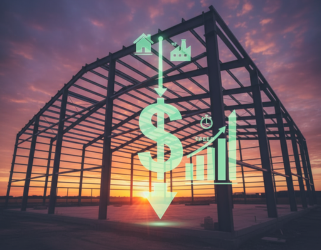
Why Pre-Engineered Buildings Are the Ultimate Cost-Saving Solution?
24 Sep 2025
Strong, Durable, and Long-Lasting: The Structural Superiority of PEBs
23 Sep 2025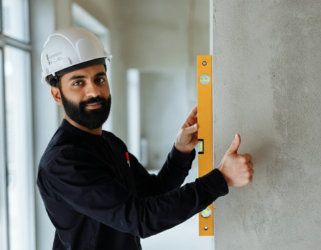
Quality Control in Civil Construction: Metrosh Infra’s Standards and Practices
22 Sep 2025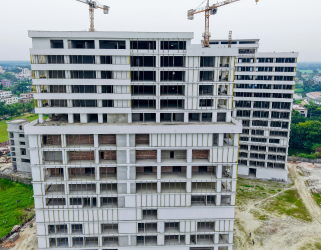
Cost-Efficiency in Hybrid Construction: Balancing Budget and Quality
22 Sep 2025
Building the Future: Metrosh Infra’s Approach to Turnkey Civil Construction
20 Sep 2025